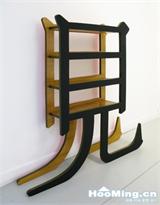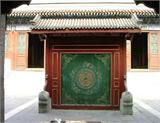In the suburbs of Zhengzhou, there is an incredibly skilled old traditional Chinese medicine practitioner.
In the spring of 2008, my son had a continuous fever. We visited many large hospitals in Zhengzhou, but none of them were effective. After receiving injections, he would feel better for a while, but after 3 or 4 hours, he would have a fever again, reaching up to 39 or 40 degrees Celsius. This went on for two or three days. At night, we took turns watching over him and gave him medicine whenever he had a fever. Those few days, our whole family was worried sick about the child. Later, a friend introduced us to an old Chinese doctor in Nan Shili Pu, who was good at treating children and women's diseases. The friend said that if we wanted to see him, we must go at 5 or 6 in the morning to queue up because the old doctor only sees 80 people per day. If we arrived in the afternoon, only his son would be available for consultation. We decided to give it a try.
The next day at five o'clock, my son was still running a fever. My wife and I couldn't wait any longer, so we took a taxi straight to Nan Shili Pu. We arrived there before six o'clock, and there were already people queuing up. I had never seen such a prestigious clinic before where you had to register to see a doctor. The weather wasn't too cold at the time, and registration started at 6:30 every morning. My wife and mother-in-law waited with me. When the registration began, I thought the old doctor must be very expensive. But the actual registration fee was only 1 yuan per person. Our number was 9. The old man started seeing patients at 8:30 in the morning, so we waited after registering.
Nan Shili Pu Clinic looked like it was run by the village, but it was actually a private clinic. The old man treated patients, his wife handled registration, and family members helped out.
The clinic faced south, and it was a two-story L-shaped building. On the west side of the first floor, registration and billing took place. On the north side of the first floor, the east end was the pharmacy, and in the middle was the waiting room. The far west end was the old man's consultation room. At 8:30, the waiting room opened, and the old man began consultations. Inside, I saw many plaques, all from people thanking him for curing their illnesses. There were phrases like "Modern-day Hua Tuo" and "Reincarnation of Bian Que." That's when I learned the old man's surname was Lu. Some plaques also referred to Doctor Lu. I didn't ask which one was correct. The old man didn't care, so why should we bother? Outside the consultation room, there was a table filled with prescription slips. Later, I realized these were the prescriptions for patients seen in the last ten days. Counting them, there were twelve per day, each with eighty pages, totaling around 1,200 people in fifteen days.
At around 9 o'clock, it was finally our turn. My wife carried our son inside. Seeing so many people, he cried because he had never experienced this before. The old man asked my wife to sit down with the child, then without asking anything, he checked the son's pulse. After a while, the old man said, "You've been to big hospitals, received injections, but they haven't worked, and the fever keeps coming back, right?" Both my wife and I were surprised that he knew we had been to other hospitals.
The old man prescribed two days of Western medicine and two small injections for our son. We administered the injection that day. Knowing that small injections could be dangerous, we stayed at the clinic for an hour to observe our son's condition. Once we confirmed there were no issues, we left.
Leaving Nan Shili Pu, even before getting off the bus, our son's fever had subsided. His fever broke that day. The next day, following the old man's instructions, we administered another injection. Our son quickly returned to his usual lively self, as if nothing had happened. He was completely well.
We began to think the old man was truly a miraculous doctor.
Last Saturday, I had some discomfort in my stomach. I went to the Zhengzhou Central Hospital, where the doctor pretentiously checked my pulse and ultimately suggested I undergo a painless gastroscopy, which costs several hundred yuan. I didn't want to spend that much money, so I decided to visit the old miraculous doctor again.
Since it was already nine in the morning, I thought I would only be able to see his son. Luckily, it was winter and quite cold, so not many people were queuing. I managed to get a number, 79. If I had arrived a minute later, there wouldn't have been any numbers left.
During the previous visit due to my son's illness, I hadn't paid much attention to the old man's setup. This time, I noticed clearly. On the old man's desk, there was only a pad for resting his arm; nothing else.
He prescribed two days of Chinese medicine for me. After taking it, I quickly felt better. This Saturday, I visited him again, and he prescribed four doses. Even before drinking them, I already felt much improved. Ha ha, truly a miraculous doctor.
The old man's characteristics in treating patients are as follows:
1. Registration is required, and he only sees 80 people per day. If someone from the village comes, the 81st number becomes the first.
2. Extremely low medical fees. It cost around 10 yuan to treat my son, 16 yuan for my first treatment, and 34 yuan for my second.
3. No pain, no radiation, just pulse diagnosis.
Source: Most Happy http://www.zuikaixin.com



